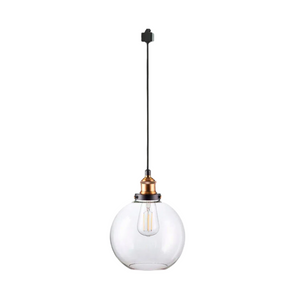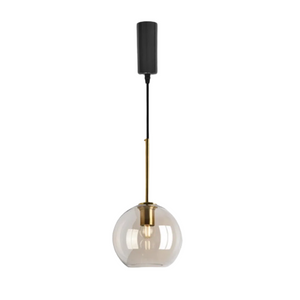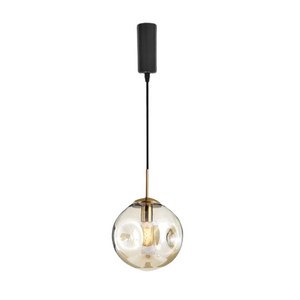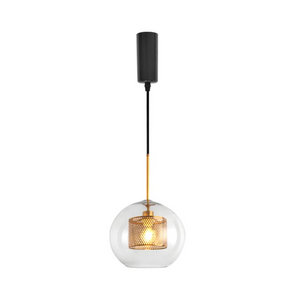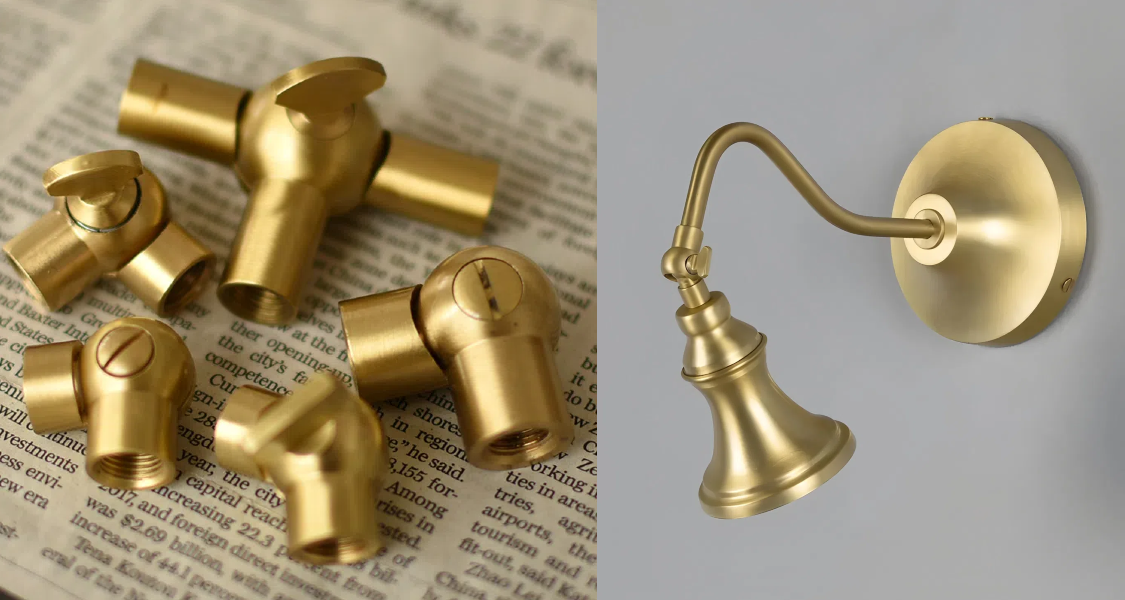Lighting stores love throwing around terms like "daylight" and "soft white," but what does that actually mean for your house? Color temperature is just a fancy way of saying how yellow or blue your light looks, measured on something called the Kelvin scale. The big showdown between 2700K vs 4000K lighting comes down to this: do you want your space to feel like a warm coffee shop or a bright office? Getting your LED color temperature right means never again wondering why your new bulbs make everything look weird.
What Does CCT Mean in Lighting?

CCT stands for Correlated color temperature, it's the number that tells you whether your light will look warm and yellow or cool and white. Every LED bulb and light fixture has a CCT rating printed on the package, usually followed by a "K" (like 2700K or 4000K). This number is your guarantee of what color the light will actually be when you flip the switch.
Why CCT Matters for Your Home:
- Consistency across brands - A 3000K bulb from any manufacturer will produce the same warm white color
- No guessing games - You know exactly what you're getting before you buy
- Easy replacements - Match the CCT number when replacing burned-out bulbs
- Room planning - Choose different CCT ratings for different spaces based on their function
The "correlated" part simply means LED manufacturers designed their bulbs to match specific color temperatures, giving you precise control over your home's lighting atmosphere.
How the Kelvin Scale Works (1000K to 10000K Explained)

The Kelvin scale runs from very low numbers (warm, yellow light) to very high numbers (cool, blue-white light). Think of it backwards from what you might expect - lower Kelvin numbers mean warmer colors, while higher numbers mean cooler colors.
Common Kelvin Ranges for Homes:
| Kelvin Range | Light Appearance | Best Used In |
| 2200K - 2700K | Golden, cozy (like incandescent) | Living rooms, bedrooms, dining rooms |
| 3000K - 3500K | Soft white, comfortable | Kitchens, bathrooms, hallways |
| 4000K - 4500K | Pure white, balanced | Home offices, garages, utility rooms |
| 5000K - 6500K | Bright white (like midday sun) | Task lighting, reading areas, workshops |
| 6500K+ | Very bright, blue-tinted | Photography studios, medical facilities |
Quick Reference:
- Lower numbers = Warmer, more yellow light
- Higher numbers = Cooler, more white/blue light
Most homeowners stick with 2700K to 5000K since these ranges feel natural and comfortable for daily living.
2700K Warm White: The Cozy Light Choice
2700K lighting produces the warm, golden-yellow light that most people grew up with from traditional incandescent bulbs. This color temperature creates a relaxed, comfortable atmosphere that makes spaces feel inviting and homey.
How 2700K Light Appears
2700K light has a distinct yellow-orange tint that's immediately recognizable as "warm white." When you turn on a 2700K bulb, the light appears soft and golden, similar to the glow from a traditional 60-watt incandescent bulb. This light makes white walls look slightly cream-colored and gives everything in the room a cozy, amber cast. Colors like reds, oranges, and yellows look vibrant under 2700K lighting, while blues and greens may appear slightly muted.
Which Rooms Work Best with 2700K
- Living Rooms: 2700K creates the perfect atmosphere for relaxing, watching TV, or entertaining guests. The warm light helps people feel comfortable and encourages conversation.
- Bedrooms: This color temperature promotes relaxation and helps your body prepare for sleep. It's ideal for bedside lamps and overhead fixtures in sleeping areas.
- Dining Rooms: Warm light makes food look more appetizing and creates an intimate dining experience. It's particularly flattering during dinner parties.
- Family Rooms and Dens: Any space where you want people to feel comfortable and relaxed benefits from 2700K lighting.
Warm White Light: The Good and Bad
Benefits:
- Relaxing effect - Helps reduce stress and promotes calmness
- Flattering to people - Makes skin tones look healthy and warm
- Creates ambiance - Perfect for intimate gatherings and cozy evenings
- Sleep-friendly - Doesn't interfere with natural sleep cycles like cooler lights can
- Familiar feel - Most people find it comfortable since it matches old incandescent bulbs
Drawbacks:
- Poor for detailed tasks - Can make it harder to see fine details or read small text
- Mutes cool colors - Blues and greens don't look as vibrant
- Can feel too yellow - Some people find the golden tint unappealing in certain spaces
- Limited alertness - May not provide enough stimulation for work or study areas
4000K Cool White: The Bright and Focused Option
4000K lighting delivers crisp, clean white light that enhances focus and visibility. This color temperature sits in the neutral range, offering bright illumination without the yellow tint of warm lights or the harsh blue cast of very cool lights.
How 4000K Light Appears
4000K light looks clean and white with just a slight hint of warmth. When you switch on a 4000K bulb, the light appears neutral and balanced - not yellow like 2700K, but not stark white like 5000K either. This lighting makes white surfaces look truly white and provides excellent color clarity. All colors appear accurate and vibrant under 4000K light, making it easier to distinguish between similar shades.
Where 4000K Lighting Performs Best
- Kitchens: Ideal for food preparation areas where you need to see ingredients clearly. Works well over countertops, islands, and in pantries.
- Bathrooms: Perfect for grooming tasks like shaving, applying makeup, or detailed personal care. Provides clear visibility at mirrors.
- Home Offices: Helps maintain alertness and reduces eye strain during computer work or reading. Good for desk lamps and overhead office lighting.
- Garages and Workshops: Excellent for detailed work where you need to see clearly. Makes it easier to identify tools and materials.
- Laundry Rooms: Helps with sorting clothes by color and spotting stains that need treatment.
Cool White Light: Pros and Cons

Benefits:
- Excellent visibility - Makes it easy to see fine details and read small text
- True color representation - Shows all colors accurately without distortion
- Promotes alertness - Helps maintain focus and energy levels
- Versatile - Works well for both task lighting and general illumination
- Modern appearance - Gives spaces a clean, contemporary feel
Drawbacks:
- Less relaxing - Can feel too bright or clinical in spaces meant for unwinding
- May disrupt sleep - Cool light can interfere with natural sleep patterns if used in the evening
- Can feel stark - Some people find it too bright or harsh for comfortable living spaces
- Less flattering - May make skin tones appear pale or washed out compared to warm light
When installing any LED lighting, especially in workspaces with 4000K bulbs, ensure you're using compatible dimmers and quality fixtures to avoid flickering issues that can cause eye strain during focused tasks. If you notice any flickering with your new LED installation, troubleshooting the underlying cause will help maintain the crisp, consistent light quality.
What Color Temperature Should You Use in Each Room?
Every room in your home has a different job, so your lighting should match what you do there. The right color temperature makes your living room cozy for movie nights, keeps you focused in your office, and sets the mood for dinner parties.
| Room | Recommended Temperature | Why This Works | Best For |
| Living Room |
|
|
|
| Bedroom |
|
|
|
| Kitchen |
|
|
|
| Bathroom |
|
|
|
| Home Office |
|
|
|
| Dining Room |
|
|
|
Color Temperature and Circadian Rhythm: The Science
Your body runs on a 24-hour internal clock that depends heavily on light to function properly. The color temperature of your lighting directly impacts this biological system, affecting everything from your energy levels to how well you sleep at night.
Light Color Actually Changes How You Feel
Cool white light (4000K and higher) wakes up your brain. When you're exposed to bright, cool light, your body stops producing melatonin - the hormone that makes you sleepy. This is exactly what you want during the day to stay alert and focused, but it's terrible news if you're trying to wind down in the evening.
Warm light (2700K-3000K) helps you relax naturally. This golden-toned light allows your body to start producing melatonin, which is why you feel drowsy when sitting by a campfire or under warm lamplight in the evening. Studies consistently show that people using warm lighting before bed fall asleep faster and get better quality sleep.
The timing matters as much as the temperature. Using bright, cool light in your morning routine can help reset your internal clock and boost daytime energy. But the same light used two hours before bedtime can delay sleep onset by up to an hour.
Smart LEDs That Change Throughout the Day
Tunable white LED bulbs automatically shift color temperature. These smart lights start the day with energizing cool white light (around 5000K) and gradually warm up as the day progresses, ending with relaxing 2700K light in the evening. Many systems sync with local sunrise and sunset times, so the transitions happen naturally without any input from you.
You can program them to match your schedule. If you work night shifts or have an unusual routine, most tunable LED systems let you customize when the color changes occur, helping maintain healthy sleep patterns regardless of your work schedule.
3 Common Color Temperature Mistakes to Avoid
These three mistakes make rooms feel uncomfortable, but they're easy to fix once you know what to look for.
1. Mixing Different Color Temperatures in One Room

The biggest lighting mistake is mixing different color temperatures in the same room. This happens when you have some bulbs at 2700K and others at 4000K in the same space. Even when you can't explain why, your brain notices this and it feels wrong.
Mixed color temperatures make many people physically uncomfortable, even if they don't know why. You might have warm bulbs in your lamps but cool bulbs in your ceiling light. The result looks messy and feels jarring.
How to fix it: Pick one color temperature for each room and use it everywhere. Write down the Kelvin number from your existing bulbs and match it exactly when buying replacements.
2. Using Cool Light in Relaxation Spaces
Cool white light (4000K and higher) works great for kitchens and offices, but it's wrong for bedrooms and living rooms. Cool light promotes energy and alertness, while warm light promotes rest and coziness.
Blue light tells your brain to wake up and suppress melatonin (the sleep hormone). Using 4000K bulbs in your bedroom makes it harder to fall asleep because your body thinks it's daytime.
How to fix it: Use warm light (2700K-3000K) where you relax, sleep, or entertain. Save cool light for kitchens, bathrooms, and offices where you need to stay alert.
3. Ignoring Natural Light When Choosing CCT
Many people choose indoor lighting without thinking about the natural light from their windows. This creates a clash between two different light sources.
Natural light ranges from 4000K to 6500K depending on the time of day and weather. When your 2700K lamps compete with bright daylight, neither looks right.
How to fix it: Consider your room's natural light when picking bulbs. In bright, sunny rooms, use cooler bulbs (3500K-4000K) to match daylight. In dark rooms or evening spaces, use warmer bulbs (2700K-3000K) for comfort.
Frequently Asked Questions About LED Color Temperature and Lighting
Q1: What's the difference between 2700K and 4000K?
2700K gives off warm, yellow light like old bulbs. It makes rooms feel cozy. 4000K gives off bright white light. It makes rooms feel alert and focused. Use 2700K in bedrooms and living rooms. Use 4000K in kitchens and offices.
Q2: Is 2700K too yellow for a kitchen?
2700K can be too yellow for kitchens. The yellow light makes it hard to see food colors when cooking. Most kitchens work better with 3000K or 4000K. These give you enough bright light for cooking. If you want warmer light, try 3000K instead.
Q3: Can you mix 2700K and 4000K in the same house?
Yes, you can use different temperatures in different rooms. Use 2700K in bedrooms and living rooms. Use 4000K in kitchens and bathrooms. Just don't mix them in the same room - that looks bad and feels uncomfortable.
Q4: What color temperature is best for reading?
4000K to 5000K is best for reading. This bright white light makes text easy to see and won't tire your eyes. Don't read under warm yellow light - it's too dim and will strain your eyes. For nighttime reading, 3500K works okay.
Q5: How do I know what color temperature my current bulbs are?
Look at the bulb or its box for a number like "2700K" or "4000K." If you can't find it, look at the light itself. Yellow light is usually 2700K-3000K. White light is usually 4000K-5000K. You can also take a photo with your phone - warm bulbs look orange-yellow, cool bulbs look white-blue.
Create Better Home Lighting with the Right Color Temperature
Color temperature changes everything about how your rooms feel. Stick with warm 2700K lighting where you relax and cool 4000K where you work. Keep all bulbs in each room the same temperature so nothing looks off. Start small - replace just your living room bulbs with matching 2700K lights and see the difference.
